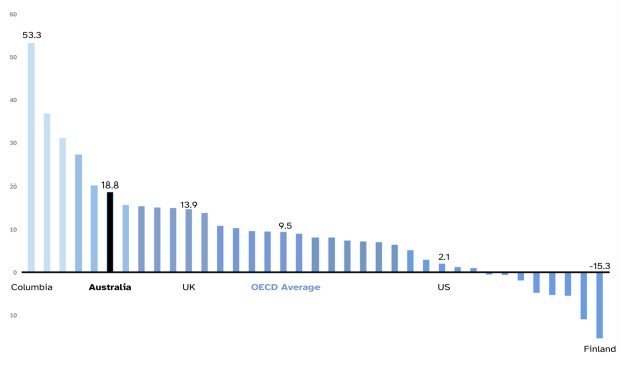The report, titled Securing Digital Equity in Australian Education, calls for policymakers to establish a Digital Equity Learning Guarantee to address data and design inequities in digital tools and ensure all Australian students can access and benefit from the highest quality digital teaching and learning resources.
The paper explores digital equity across access, data, design and effective use, considering case studies of Australian schools with a range of student socio-economic backgrounds
Co-author and chair of the Australian Network for Quality Digital Education, Professor Leslie Loble, says the research underscores the urgent need to address equity across all four dimensions for edtech to realise its potential to help tackle ongoing educational disadvantage in Australia, while mitigating the risks of it further amplifying the hardships facing some students.
“Edtech has significant potential to bridge the learning divide, but it is not a silver bullet for education,” Loble says.
“Digital tools are only as good as their design and their use – and in Australia we can already see the warning signs of these tools amplifying disadvantage across all fronts.”
Loble, a former chair of the Australian Education Ministerial Council’s Schooling Policy Group and former Deputy Secretary in the NSW Department of Education, says the risks of overuse and misuse of edtech and AI are real and increasingly documented, but less attention is paid to the significant risk of underuse and missed opportunities.

“By addressing all dimensions of edtech equity – through a Digital Equity Learning Guarantee – we can not only mitigate the risks but harness edtech’s potential to finally bridge the digital divide and improve learning outcomes for students who will most benefit from the opportunities these digital tools present,” Professor Loble says.
“While there are thousands of assistive technology tools available for our schools, there is a huge gap between the education potential this represents and the reality of students who do not have ready access to appropriate devices and services,” she says.
“These missed opportunities will likely be borne by those who already miss out. We know that over one-fifth of students in schools where disadvantage is common lack digital resources, compared with only two per cent in schools where students come from wealthier backgrounds.”
The recommended ‘Digital Equity Learning Guarantee’ for all Australian students will:
- Provide free or low-cost access to quality digital devices and connectivity to support disadvantaged students’ learning, and additional resources to lift digital skills and AI literacy.
- Expand the effective use of digital teaching and learning tools, especially to improve outcomes for disadvantaged and special needs students, through professional learning opportunities and preservice teacher education; and research into what works best in using edtech learning applications, including work with disadvantaged schools to test and showcase effective integration.
- Set equity and inclusion as core design expectations of edtech used in Australian schools through standards, procurement processes and co-investment by government and industry to develop and scale equity-focused design.
- Ensure the highest level privacy and safety protections for children and students in the design and use of educational technologies.
Loble says improving digital access, including digital literacy for teachers and school resourcing, is the bedrock of digital inclusion in education and should be a priority for policymakers.
“But how we approach issues of data, design, and use are equally critical,” she explains.
“It is important that data equity prioritises safety, but it must push well beyond that – ensuring fairness in design to remove the risk that these technologies focus on a mythical average learner at the expense of the true range of student learning needs and backgrounds.”

Percentage of principals reporting that learning is hindered by a shortage of educational resources, by school demographic. Source: PISA 2022 data accessed via De Bortoli L and Underwood C (2024).
The Australian Network for Quality Digital Education brings together leaders from across education, industry, social purpose and philanthropic organisations, government and research, in the common purpose of ensuring that all Australian students benefit from the best educational technology, and the benefits of it are leveraged to tackle the persistent learning divide.
So, is there any indication that the Federal Government is paying attention to its research and recommendations?
“Well, while the network includes all governments in Australia, it's a network, it's not a peak body, it certainly doesn't take the place of education ministers and the decisions they make,” Loble tells EducationHQ.
“But I think it's pretty clear that governments, social benefit organisations, philanthropy and the tech sector itself understand that we have to tackle these equity issues if we want to ensure that we get the educational outcomes we're looking for in Australia.”
Asked whether she remains optimistic around whether inroads are being made towards a possible digital equity learning guarantee, Loble says it’s important that we always be optimistic.
“When I wrote that report (Shaping AI and edtech to tackle Australia’s learning divide report) in 2022, there was very little conversation about AI and education technology,” she explains.
“Now it's a live consideration so education ministers, governments, have adopted nationally a set of guidelines and a framework surrounding AI use in schools.”
A recent House of Representatives select committee has looked even deeper and made a number of recommendations, and very much around the equity aspects, Loble shares.
“We can see in the proposed school funding agreement that ministers have expressly articulated the need for quality curriculum support.
“They're calling for action on workload reduction for teachers and, of course, the entire agreement is framed by better outcomes and reducing equity gaps.
“…what led to that agreement, or one of the pieces that was behind the agreement, was the independent review that was conducted and there were specific findings in that review that called out the need to move forward on tackling equity when it comes to learning resources and education technology.”

The difference between percentage of students in low and high SES schools lacking digital resources. Source: OECD (2023a) PISA 2022 results
The Securing Digital Equity in Australian Education report includes case studies from schools in NSW, Victoria and Queensland, which give insight into how schools are using AI and edtech, particularly in disadvantaged schools, and the incredible ways they can have an impact.
“And we learned a lot of things we never expected to see,” Loble explains.
“For example, the Intensive English Centre in Fairfield in south western Sydney includes students who have come to Australia with very limited literacy even in their home languages, limited schooling, let alone English language proficiency.
“…and that case study shows how using generative AI tools that allow you to convert speech to images has had a profound impact on kids."
The other thing Loble and her team learned at schools such as Beenleigh High School in a very disadvantaged area in Queensland, is that not only is generative AI helping with greater differentiation for students and supporting teachers and being able to address the very wide range of learning needs, it’s also helping with reducing workload as well.
“It particularly helps with newer teachers and giving them a structure and support in lesson planning,” Loble says.
“But it also showed us, and it comes through in that case study, that what it has helped is list collective efficacy – so not just individual teacher efficacy, but collective efficacy, which really is the key ingredient for school-wide progress.”
The business model around education technology is all about subscription, and as such can be quite expensive, and so there’s not only a risk of the pricing out of students and their families, but schools are likely to also struggle.
“So each one of these could have a positive impact, the important caveat being that they are well designed, but It's crucial that we make the investment, which is why the very first thing in the Digital Equity Learning Guarantee is making sure all students can even get to the starting gate of having access to affordable quality technology.
“And if we don't get that, we face a very great risk that our digital divide makes our learning divide even worse.”
To read the Securing digital equity in Australian education report, click here.
To read the 2022 report Shaping AI and edtech to tackle Australia’s learning divide, click here.














